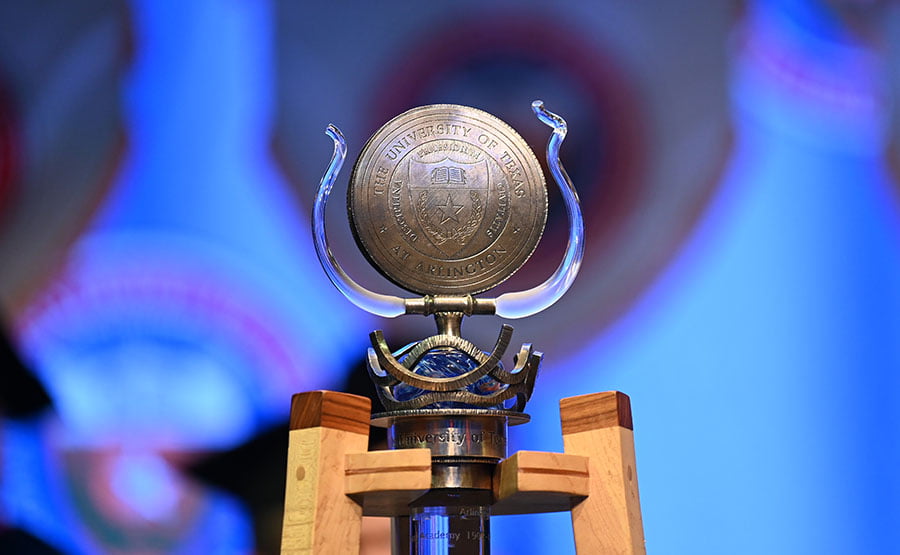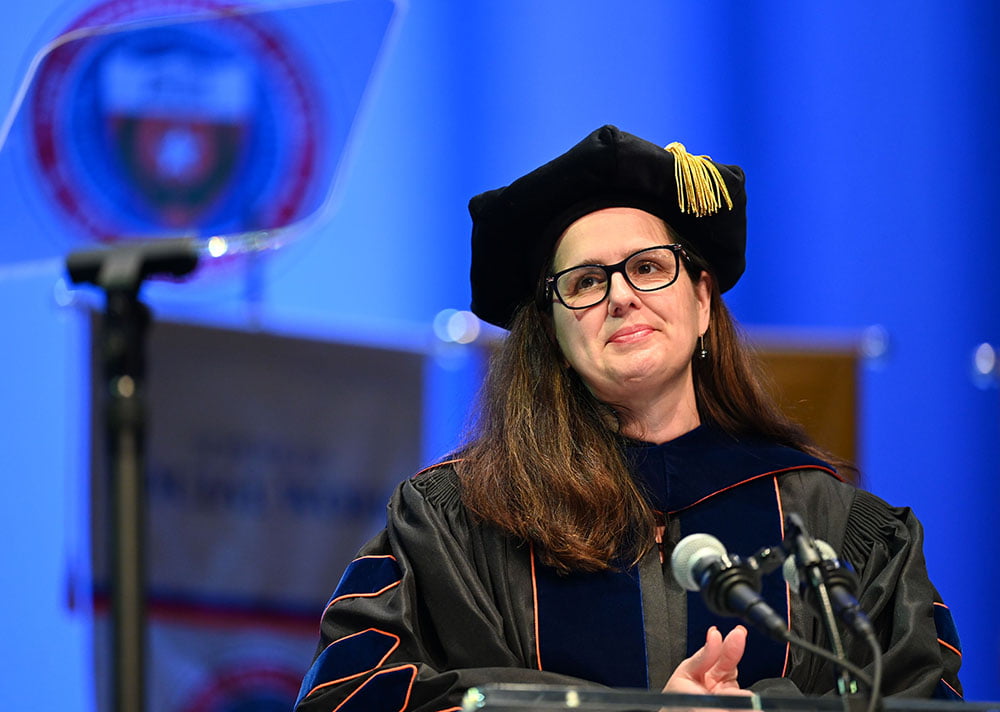Contact:
Email: president@uta.edu
Phone: 817-272-2101
Office of the President
The University of Texas at Arlington
701 S. Nedderman Drive
Arlington, TX 76019
Steeped in tradition and protocol, an investiture is a formal ceremony conferring the official power of the office upon a new university president. At UTA, the investiture events are a celebration of everything the University has achieved in our history and the accomplishments to come under President Cowley’s leadership.
The investiture includes a procession of UTA faculty and staff, delegates from other colleges and universities, community leaders and partners, and other honored guests.

Maces, a symbolic staff of high office, are often traditional elements in academic processions and symbols of peaceful leadership bestowed upon University presidents at their investiture. UTA’s distinctly non-traditional mace was designed and created in 2007 by Texas State Artist and UTA Professor David Keens with the assistance of Fred Miller, adjunct professor of metal art. The mace is an undulating, artistic design of metal and glass that reflects the traditional symbols of academia in a dynamic and contemporary way.
Almost completely made of clear glass, it is only upon closer observation that the University’s colors are seen in glass below the round, etched-metal University seal. Surrounding the seal is a contemporary wreath design in transparent glass symbolizing the pursuit of higher education. Below that is a forged metal contemporary nest. The etched glass underneath lists the institution’s past names. All of these sections rest on a long, swirled-glass, undulating tendril, reflecting the linear flow of time. It is a tangible image of history, prestige, formality, creativity, innovation, and the uniqueness of UTA.

The attire worn by participants in university investitures dates to the 12th and 13th centuries in early European universities. At that time, the clergy composed the majority of the educated class, so academic dress is an adaptation of the cape or mantle—usually made of silk or wool—worn by church dignitaries in religious processions.
Through the years, great diversity in color and in style of regalia developed. In 1896, colleges and universities in the United States adopted a uniform code governing academic dress. Academic dress today has three items—cap, gown, and hood—and there are different styles of each for each degree level. The three bars of velvet on the president’s full-sleeved gown, her velvet tam, and the four-foot-long hood signify that she has earned a doctoral degree.